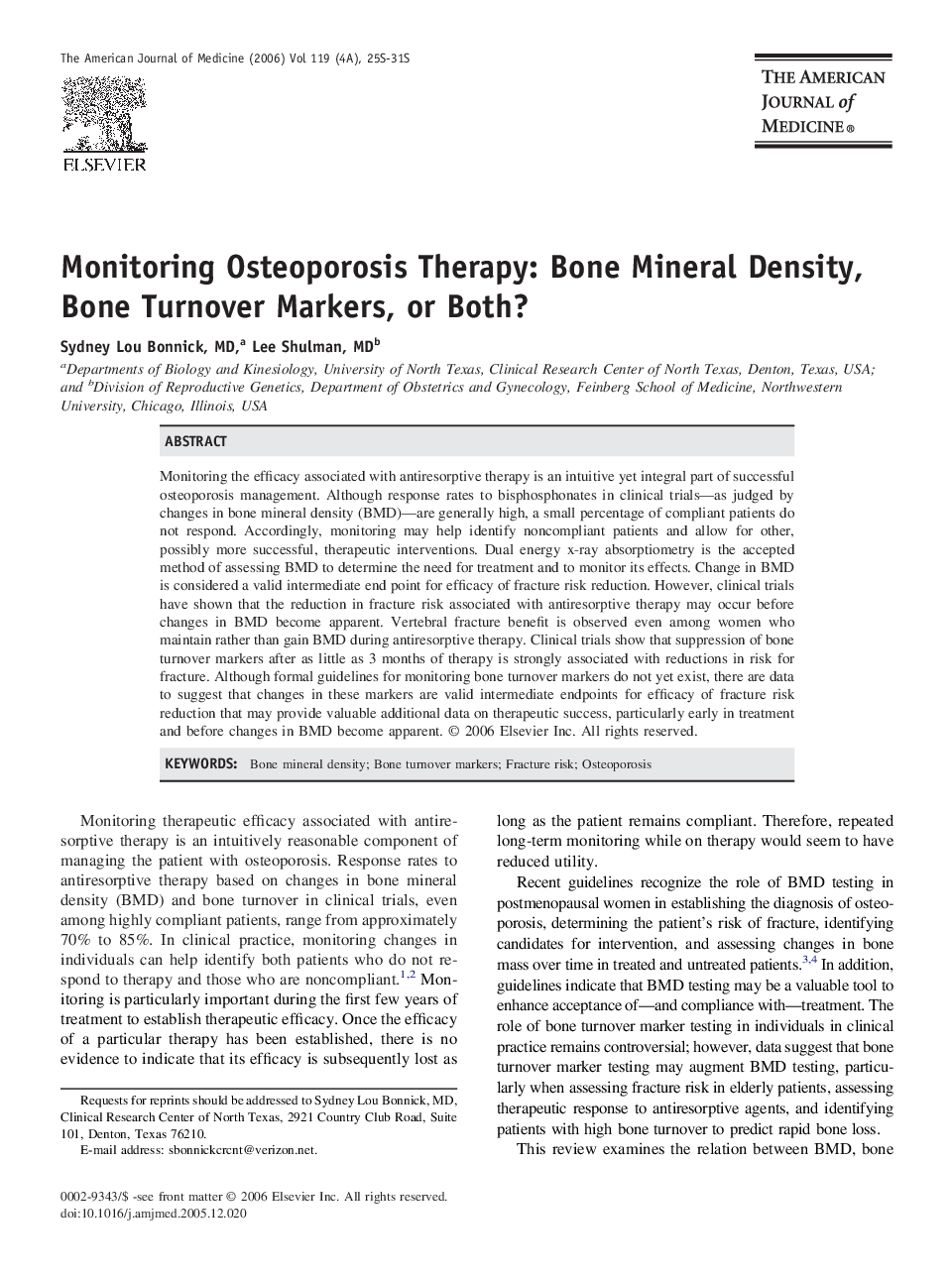| Article ID | Journal | Published Year | Pages | File Type |
|---|---|---|---|---|
| 2717758 | The American Journal of Medicine | 2006 | 7 Pages |
Monitoring the efficacy associated with antiresorptive therapy is an intuitive yet integral part of successful osteoporosis management. Although response rates to bisphosphonates in clinical trials—as judged by changes in bone mineral density (BMD)—are generally high, a small percentage of compliant patients do not respond. Accordingly, monitoring may help identify noncompliant patients and allow for other, possibly more successful, therapeutic interventions. Dual energy x-ray absorptiometry is the accepted method of assessing BMD to determine the need for treatment and to monitor its effects. Change in BMD is considered a valid intermediate end point for efficacy of fracture risk reduction. However, clinical trials have shown that the reduction in fracture risk associated with antiresorptive therapy may occur before changes in BMD become apparent. Vertebral fracture benefit is observed even among women who maintain rather than gain BMD during antiresorptive therapy. Clinical trials show that suppression of bone turnover markers after as little as 3 months of therapy is strongly associated with reductions in risk for fracture. Although formal guidelines for monitoring bone turnover markers do not yet exist, there are data to suggest that changes in these markers are valid intermediate endpoints for efficacy of fracture risk reduction that may provide valuable additional data on therapeutic success, particularly early in treatment and before changes in BMD become apparent.
